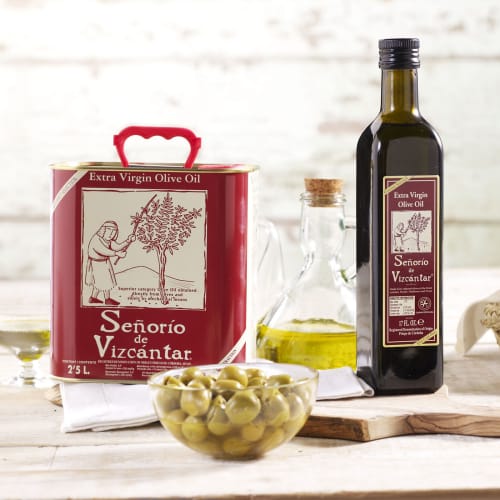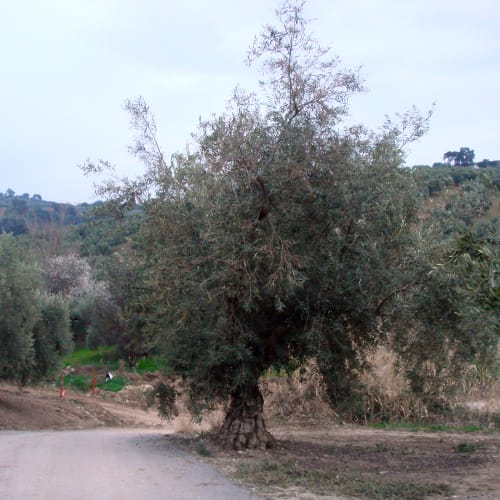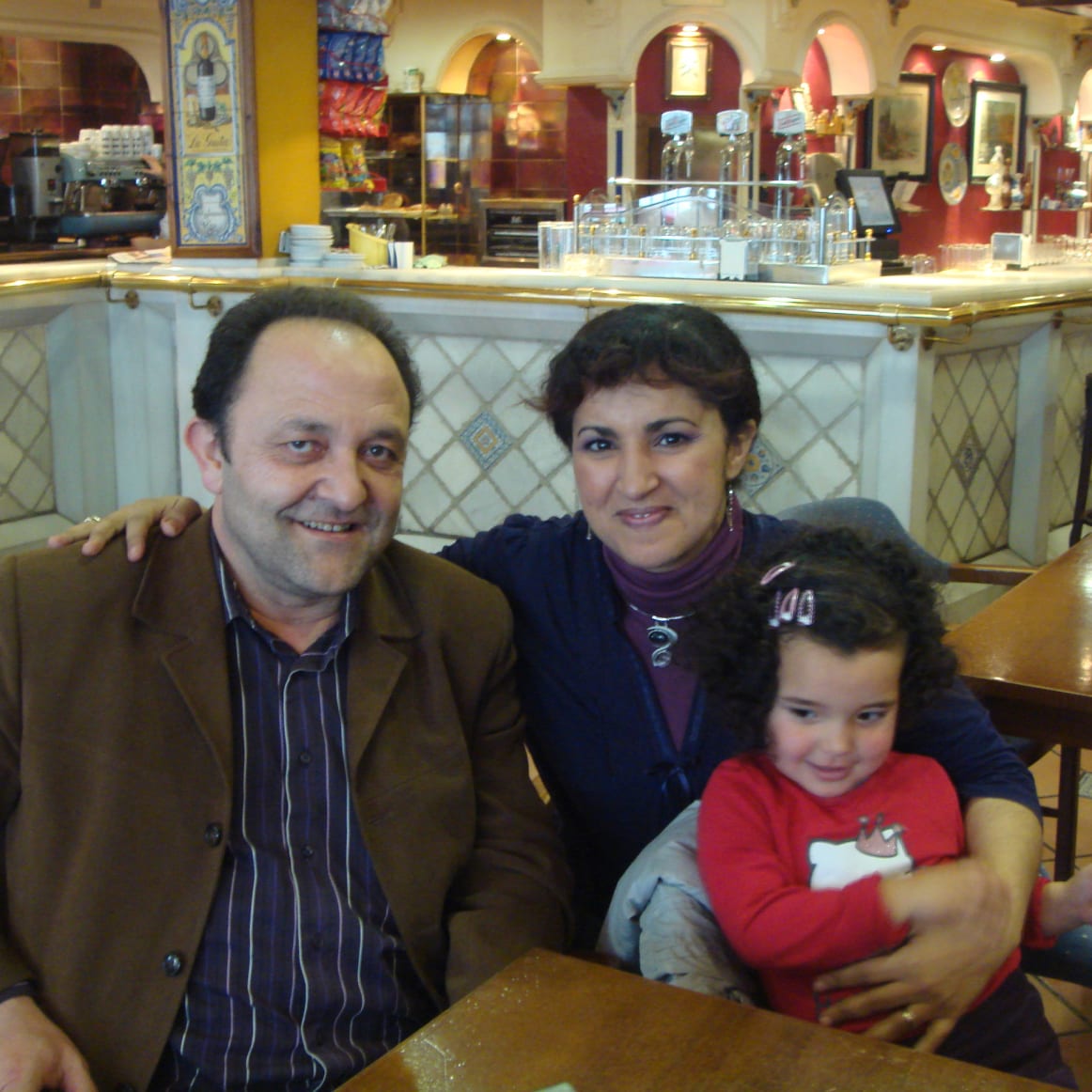The Perfect Blend in Priego de Cordoba
April 2009




I find it fascinating how our roots draw nourishment from many sources, and often result in something quite beautiful. As an analogy I think of our favorite Señorío de Vizcántar extra virgin olive oil, which contains the oil from three distinct strains of olives. It lacks the pristine flavor of a single fruit olive oil such as Arbequina or Picual produce, but it has a rich complexity of its own which is very satisfying.
What goes for olive oil applies to cities as well. As I grew up in Boston I could see how a culture with strong English roots was changing: the North End was populated by Sicilian immigrants, “Southie” was the turf of Irishmen. Yet somehow it has all worked out and the city is the richer for it.
You might think that mine is an American story, but it is all of our stories. In Spain, for example, as you walk through the old Jewish section of Córdoba you will come face to face with a timeless structure which is a huge cathedral enclosed by a classic mosque, which in turn was built over a fifth century Visigoth church!

The town where Señorío de Vizcántar is produced is Priego de Córdoba - a jewel set among the dozens of sparkling white cities that dot the countryside of Andalucía. It is situated strategically on the crest of a small mountain with a commanding view of olive groves which stretch as far as the eye can see. In medieval times, Priego de Córdoba was the center of a thriving silk trade nestled in the rugged terrain between the Mediterranean port of Malaga and Córdoba, then the magnificent capital of Islamic Spain.
When you visit Priego de Córdoba today, you can still see remnants of this time of great wealth within the narrow cobblestone streets of the Arab Quarter, the handsome civil architecture and the stately residences. Its large and baroque marble fountain still draws from a subterranean spring, a source of water since Carthaginian times. This synergy occurs within families as well.
My wife Ruth and I first visited Priego de Córdoba in 2001 in search of an olive oil which would serve as the signature olive oil for La Tienda: a personal selection made by our family which we would like to have grace our tables at home. We were invited there by Fermín Rodríguez. He is a gentle man whom we had met at the Alimentaria in Barcelona - a giant food fair whose origin dates back to the time when it was one of the three major Medieval Fairs in Europe, the others being Paris and Cologne.
During our time with Fermín we visited a formal room where the local olive oil was evaluated. Fermín is one of the professional tasters who determine which of the freshly pressed oils from that region are worthy of the designation D. O. Priego de Córdoba. He and his fellow tasters pour the several oils into small cobalt blue glass cups, so colored that the taster is not distracted by the color of the oil – which has nothing to do with its quality. Each cup is covered with a clear circle of glass so that the oil’s aroma is captured.
The tasting process is just as you would do if you were a taster of fine wine - after all, both wine and extra virgin olive oil are juices, just from different fruit. A taster selects one of the cups and cradles it in his hand to warm the oil – somewhat as you would a brandy snifter. He breathes in the fragrant aroma, and then sips the oil, savoring its freshly pressed complexity. Since the extra virgin olive oil of the Priego de Córdoba D.O. is a blend – not a single fruit olive oil – accurate evaluation of the balance of flavors is critical.
Just as there are a variety of grapes - cabernet, tempranillo or grenacha, which produce distinctive wines - so there are different olives such as Arbequina, Hojiblanca or Picual, which yield distinctive extra virgin olive oils. Some have the clarity of a single variety. Some are a blend. At La Tienda we have examples of both. Which is the best is a matter of taste.
Eight years later, we returned to be with our friend Fermín. Years had passed since Ruth and I had visited, and now Fermín is a happy family man with a warm and vivacious wife, Aixa (pronounced eye-sha) and their radiant three year old daughter Sofía. It was a daunting task to climb the mountain and navigate the winding streets of Priego de Córdoba in our rental car, but the moment we made renewed contact with Fermín it was as if we had never left. He invited us to return with him to his olive groves - a natural request since olives are his life, and that of his father, and so on for generations past.
So, with his wife Aixa and some friends we visited his acreage near the neighboring hamlet where he was raised, and his brothers still live. He showed us trees bearing Picudo, Picual, and Hojiblanca olives, growing side by side as some of them have done for centuries. We saw an olive tree that was more than a thousand years old, within whose hollow Fermín used to hide as a young boy.
I felt something almost mystical standing among the olive groves. These gnarled trees with their deep taproots are strong and timeless. I thought to myself, “I may well have been standing in a grove that a Visigoth farmer harvested fourteen hundred years ago!” And then, “That hollow which Fermín hid in as a child might have harbored another little boy eight hundred years before – much the same, except he probably would have been a Moor.”
I was returning to my fascination with how our roots often draw from many sources and may result in something quite beautiful, such as Fermín’s olive oil. The next afternoon, as I walked beside Aixa along the cobblestoned street of the Moorish quarter of Priego de Córdoba she turned to me and laughingly said that she embodied the history of Spain: She was a Jewish Muslim Berber from Morocco with a Christian husband and daughter!
As you may recall, the Berbers crossed over from North Africa in 711 AD at the invitation of quarreling Arian and Catholic Visigoth kings. For the next 800 years an uneasy relationship existed between the Jews, Moors and Christians as they lived among one another in Spain – Al Andaluz. In 1492 the monarchy forced Jews, such as the Sephardic ancestors of Aixa’s mother, to leave Spain to make their homes in North Africa. Soon the Moors were also forced to leave - Muslims, like Aixa’s paternal family. (Unfortunately the Jews and Muslims did not get along together that well in the new setting, either.)
Aixa’s father is a successful hotelier and restaurateur in Casablanca, where she and her brothers and sisters were involved in the international community in this most cosmopolitan of cities. Over the years she learned French, German, Arabic, and Spanish. She was hired as an interpreter for Fermín when he was interviewed on French television - that is what brought them together.
As they formed a new family they became part of a continuum of olive husbandry that stretches back to antiquity. Just as his beautiful Señorío de Vizcántar is the product of many different olives, so also Fermín, with his loving wife Aixa and their delightful three year old daughter Sofia represent the many strains of modern Spain. Not a perfect analogy, but I think a useful one.
Tu amigo,
Don
PS. 2009 is an extraordinary year for Señorío de Vizcántar, the best we have tasted. A couple of weeks ago we received Fermín’s oil from the new harvest. It is pungent, aromatic and delightfully fruity. Its remarkable dark green color indicates that Fermín must have picked the olives at the earliest possible moment. We love it – you might too.

